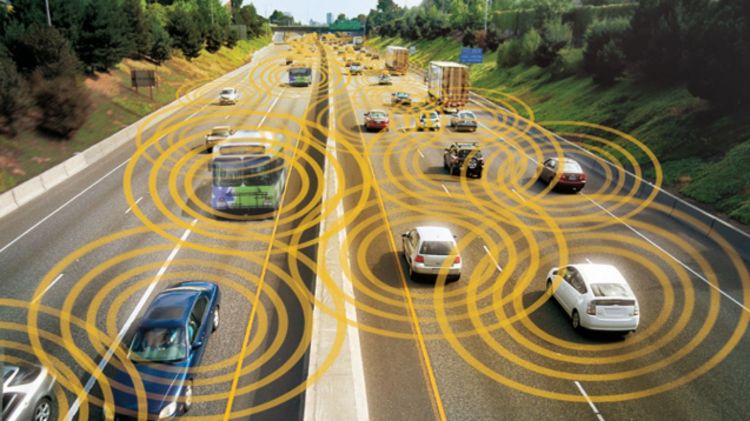The Internet of Things has created a new market in the automotive industry, one which is showing no signs of slowing down. Connected cars and their associated services are expected to grow from $13.6 to over $42 billion by 2022.
A glimpse of our collective future can be seen in Cadillac’s Book by Cadillac entrance — a service providing on-demand, luxury, lifestyle-driven vehicles by subscription. The $1,500 per month service will allow members to swap out different models of high-end sedans and SUVs, beginning in New York in February. It’s the same business model as ClassPass or Netflix, but for the GM-owned Cadillac brand, and competes with the likes of Audi’s luxury mobility offering, Audi on Demand.
The open road is calling
Audi and Cadillac have taken the functionality of Zipcar and turned it into a “white glove” service that leverages the pre-existing brand affinity that is typical of many luxury buyers. Ford is also on board with FordPass — the first automaker-produced app that can provide services to drivers who don’t own a vehicle from that brand. The app also helps find parking and lock and unlock the car — all great features — but the magic is that it helps build brand affinity even when the customer is away from their car.
Automakers and other industry players are also forming partnerships to offer innovative connected car services. Ford is testing out a peer-to-peer car sharing service called Smart Mobility that allows Ford Motor Credit customers to rent their cars to other drivers. Toyota has partnered with Uber to lease cars to Uber’s drivers, and GM has partnered with Lyft to offer its drivers short-term rentals. GM also acquired a car-sharing app in Europe to help people share their car, even if it’s not a GM vehicle.
Transportation-as-a-Service (at your service!)
At a high level, this category seeks to address a set of market demands that all say, “I want a different way to get behind the wheel.” More than anything, this is a reflection of a millennial ethos that sees less value in the instantly depreciating “investment” of a traditional car purchase. Demand for this service is especially acute among urbanites who simply don’t need or want a car full-time. The massive success of Zipcar is the most obvious realization of this attitude.
Adults between the ages of 21 and 34 bought just 27 percent of all new vehicles sold in America in 2010, down from the peak of 38 percent in 1985.
How will the auto industry cash in?
Whether we’re talking about ride sharing, location services, apps, telematics, Wi-Fi, or internet radio, all these services need flexible billing options to support subscription- and consumption-based models.
For the industry to fully capitalize on connected car services, it will have to revisit processes to support their monetization. The industry’s major technical infrastructure has relied entirely on a one-time sales revenue model for the last 110 years. Pricing was set to coincide with leisurely two-year development cycles. Today, models and development cycles are being sped up. Automakers often don’t have the back-office capability to handle selling, billing, and provisioning on-demand products and services outside the dealer network and with a recurring revenue and customer lifetime value model. If they are to succeed, they need to prepare their billing and accounting systems and practices today, not after the next launch or acquisition.
Automakers must accelerate their paradigm shift
Connected services will be part of the deal, but cashing in is going to take a fundamental shift in how automakers think about selling cars. Building and selling a car and hoping that it’s good enough that the customer will buy another one in 5-7 years — what’s thought of as earning “loyalty” — has to evolve into building strong and lasting brand affinity.
Companies need to focus on the brand and its relationship to the customer. This can no longer be relegated to just point-of-sale, it has to be constantly nurtured. That is going to take a direct line of sight to the customer that cannot be maintained with the current dealer-driven sales structure. Achieving brand affinity is going to be relatively easy for makers of luxury vehicles and work vehicles, where it tends to already exist, but is going to be much harder for makers of low-to-mid-market passenger vehicles. In these cases, the consumer’s affinity and relationship are far more likely to reside with the provider of the service that puts them behind the wheel (think Zipcar, Enterprise CarShare, even Uber and Lyft) than with the manufacturer of the vehicle itself.
Automakers, their dealer networks, and the wholesale model all rely on long-standing traditions and agreements. Today’s customers are used to self-service, to doing their own research and making purchases on their own terms. To these consumers, the dealership model is archaic, painful, and unnecessary. The industry needs to steel itself for a massive culture change in which the dealership becomes part of the relationship, instead of the entire relationship.
VentureBeat's mission is to be a digital town square for technical decision-makers to gain knowledge about transformative enterprise technology and transact. Learn More

